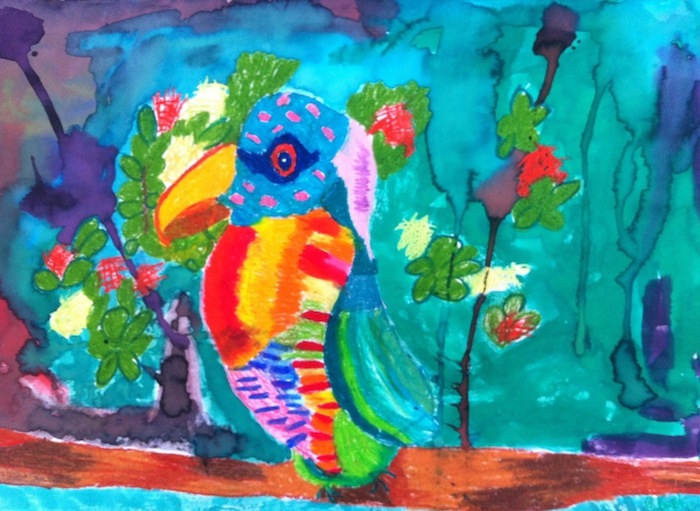|
Drawing is a natural skill ...
every one can learn to draw. Children start to draw at a very early age, often drawing beautiful rainbows, colourful and exciting artworks of their family, their house, nature, etc. These free expressive drawings (symbolic drawings) are important in their development and I feel they should be able to continue with this type of drawing as long as they like with no interference. Usually by the age of 9 or 10 children begin to want their drawings to look 'real', sometimes seeking extreme realism. They can become very frustrated when they are not 'right'. It is often a time when a child will give up drawing because they're “no good at it”. Adults who stopped drawing when they were around 10 years old will not have developed their drawing skills, simply because they stopped drawing, not because they have no capability. There is a process, it takes time and practice. The South Coogee Art Club approach is to teach children to draw what they 'see'. By learning new ways of 'seeing', creativity flows freely and students draw and paint with feeling. (They can still do their symbolic drawing in their free time. These two types of drawing do not need to be compared.) During the 8 week course we will do a number of exercises designed to enhance our visual skills. To learn to see. We will discover there is a difference between looking and seeing. Some of the exercises include : The Blind Contour - drawing without looking at the paper, with a slow, continuous line and an intense focus on the subject. This develops eye-to-hand coordination and feeling with a sensitivity of line. Fast and fun seeing games - feeling the energy, movement, spirit of the form. This offers the avenue to 'flow states' and peak experiences. Negative Space - seeing the shapes in and around objects, the nameless shapes. Materials - Using charcoal we will learn about weight and see the light and shadows. We will experience colour with pastels, paint and watercolour. We will learn about printmaking with scratch foam or silkscreens and will use clay once a year. We will be spending a lot of time drawing - either with graphite, charcoal, ink or coloured pastels. I believe drawing is a really valuable skill for life and vital for painting and other forms of art making. The best approach is to do the exercises for their own sake. To do them for fun and not to worry about the finished product. The experience is what is really important. Our subjects will include : Self portraits and portraits of each other, still life - fruit, flowers etc, graphic images of animals, dragons, cars, sunsets, abstactions and more. About Feeling Children have a huge capacity for creativity and free expression. Everyone has their own unique way of seeing and understanding. Even a drawing of flowers or fruit can be full of life, energy and feeling or on the other hand it could be lifeless. I want to support and celebrate the special, individual qualities each child already possesses and to help inspire them to grow and blossom. “Every child is an artist. The problem is how to remain an artist once they grow up.” Picasso Using accelerated learning principles, including, music, fun, laughter and games, students develop quickly. Students will be encouraged to take risks, make mistakes, solve problems and enjoy the experience. Some of the work they bring home will have been done for the experience rather than a finished product. Support and acceptance of any interesting artwork, even scribbles, is very valuable. Drawing regularly, really speeds up the learning process (like practicing an instrument). We will share some ideas for drawing at home. No pressure, this is not homework, it's for fun. I don't believe artistic ability is hereditary or only for the talented. It is for anyone who loves it, who wants to, who has some passion. That is the real gift. Gabbi Kitchener |

